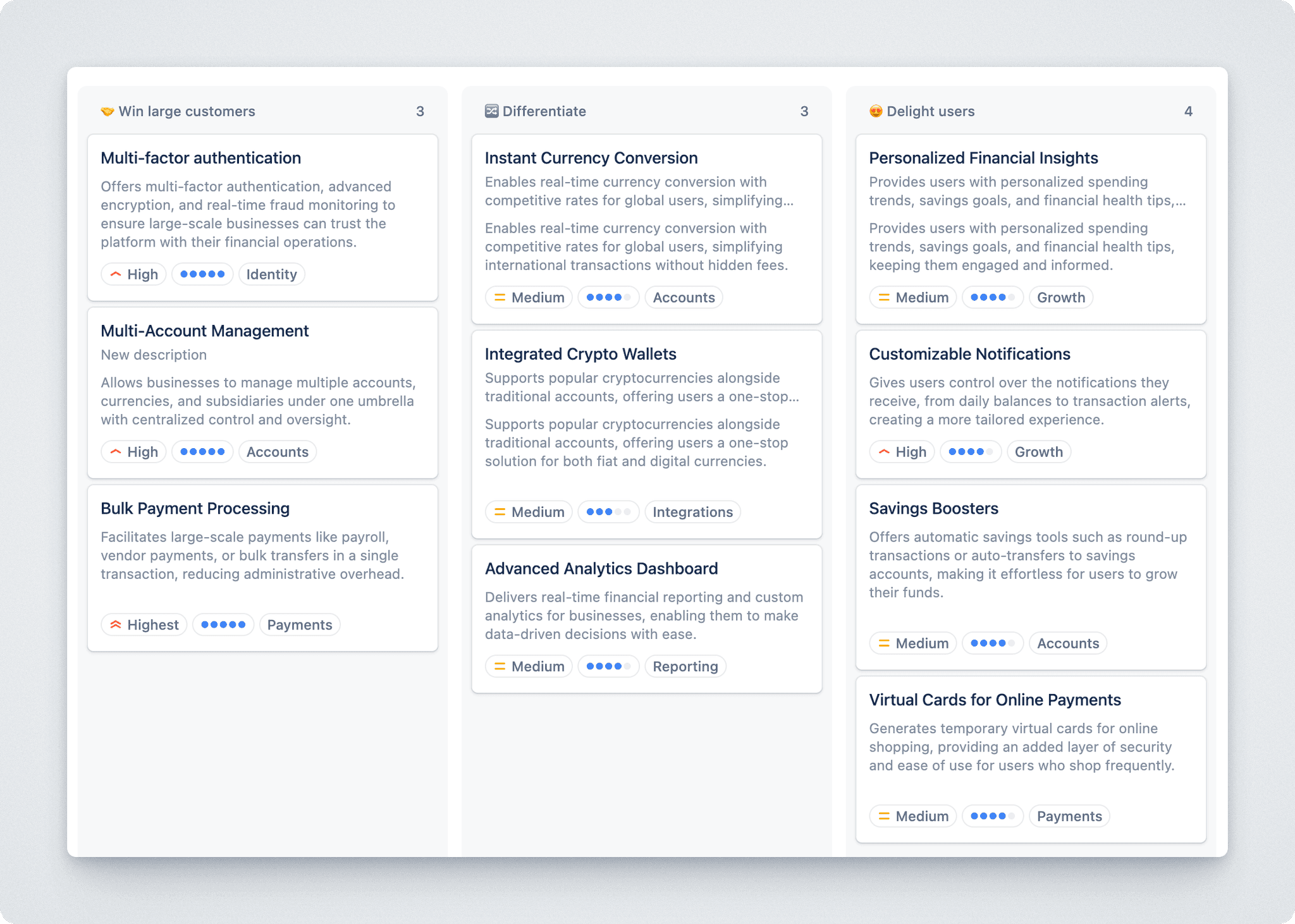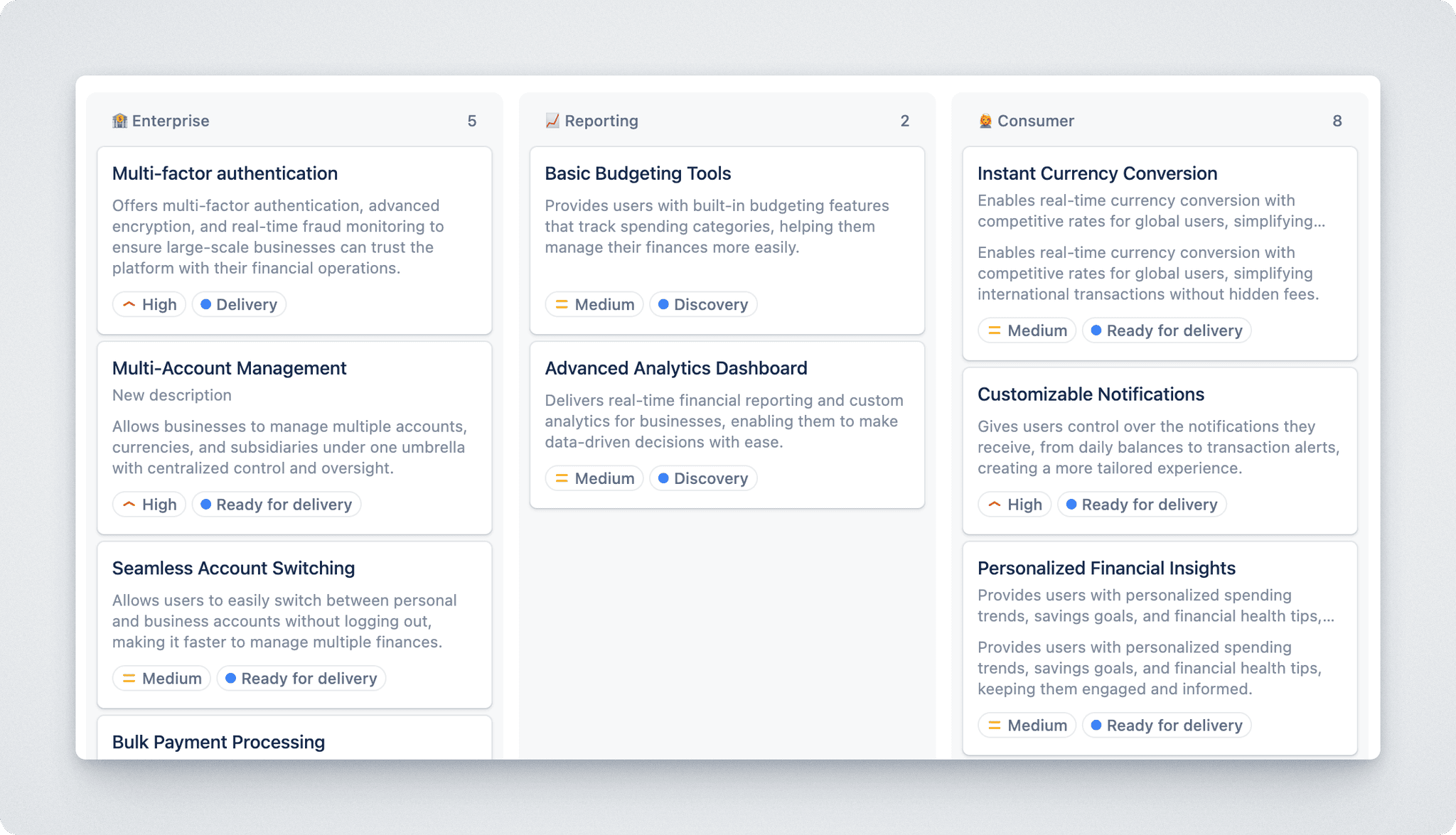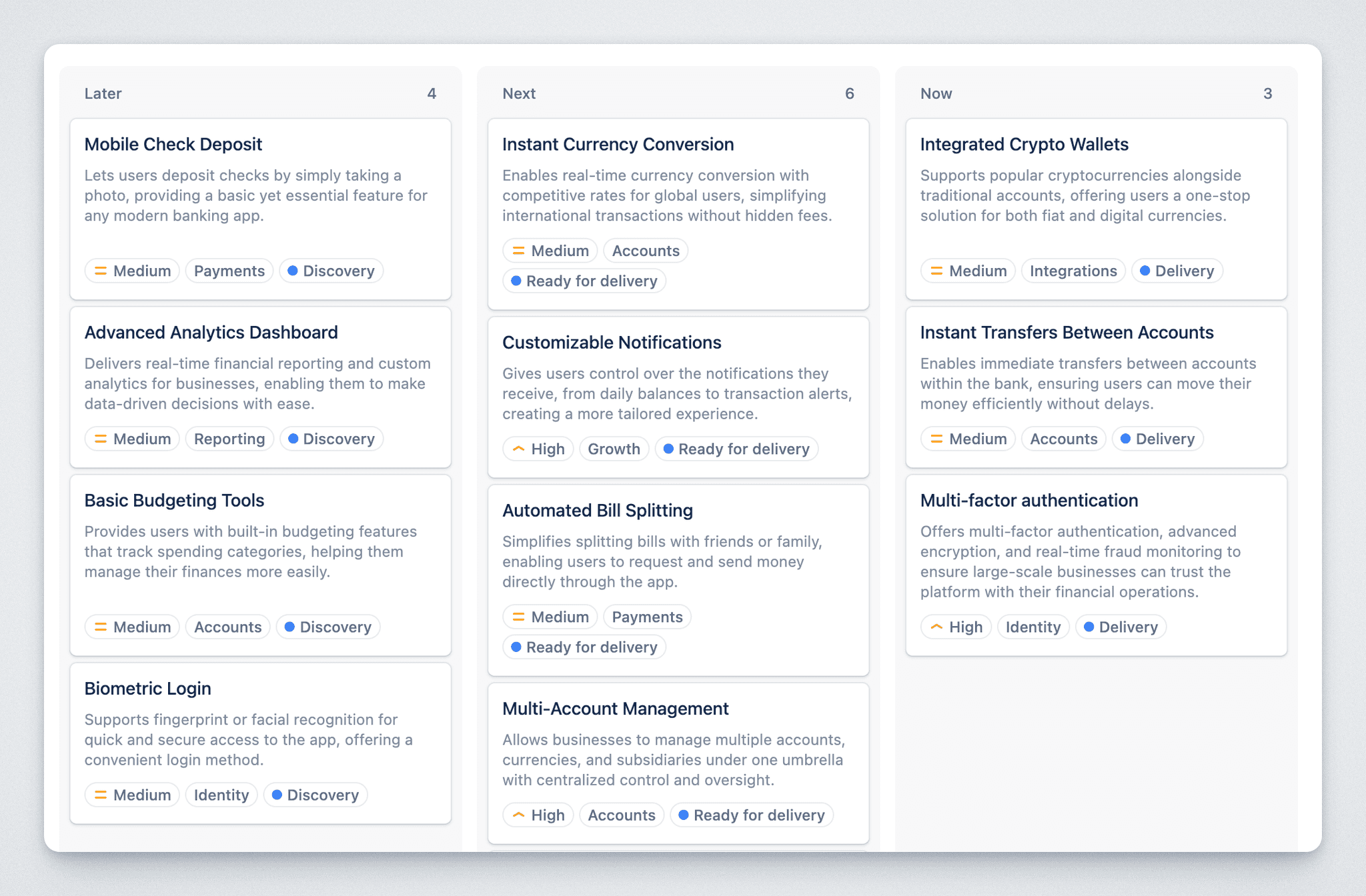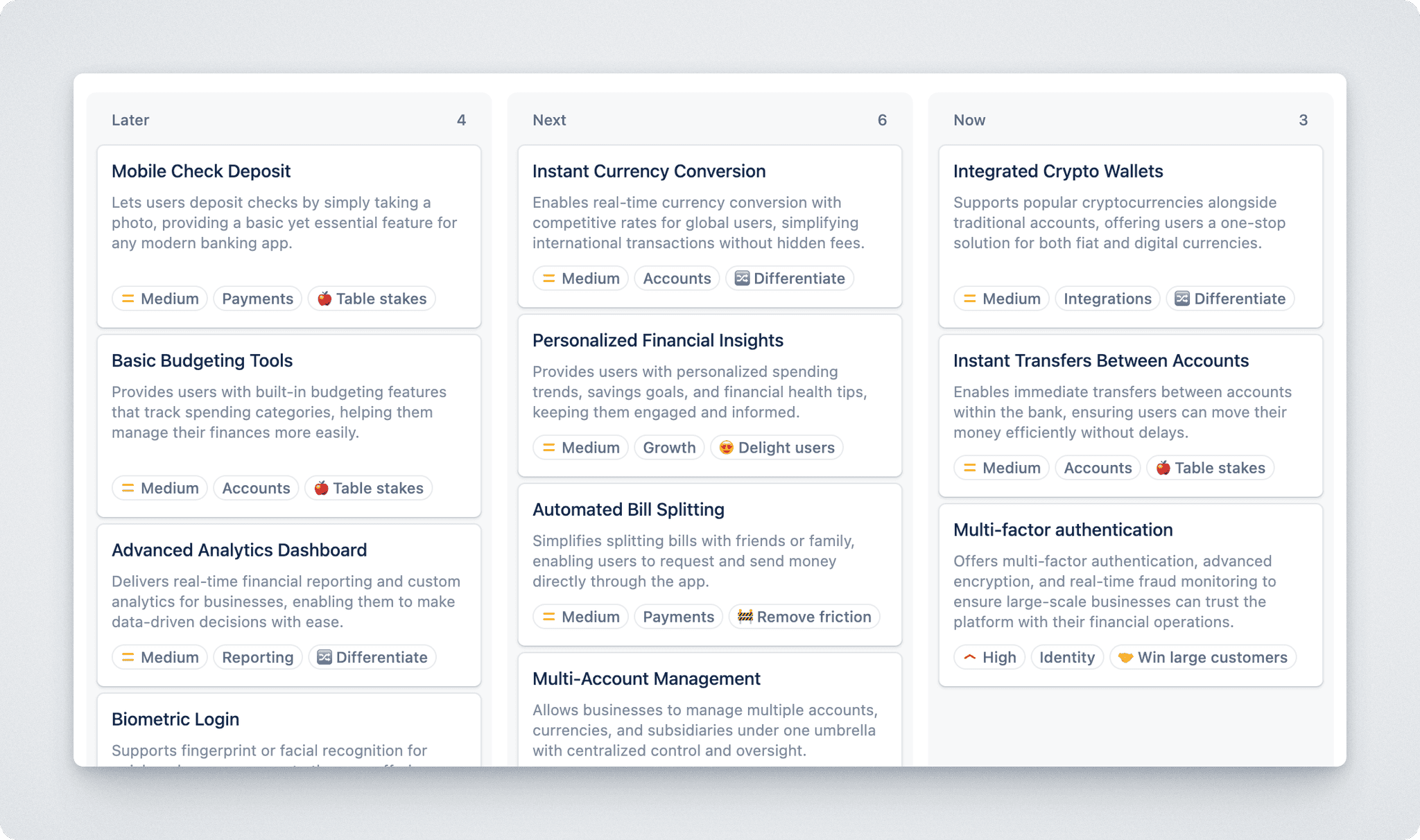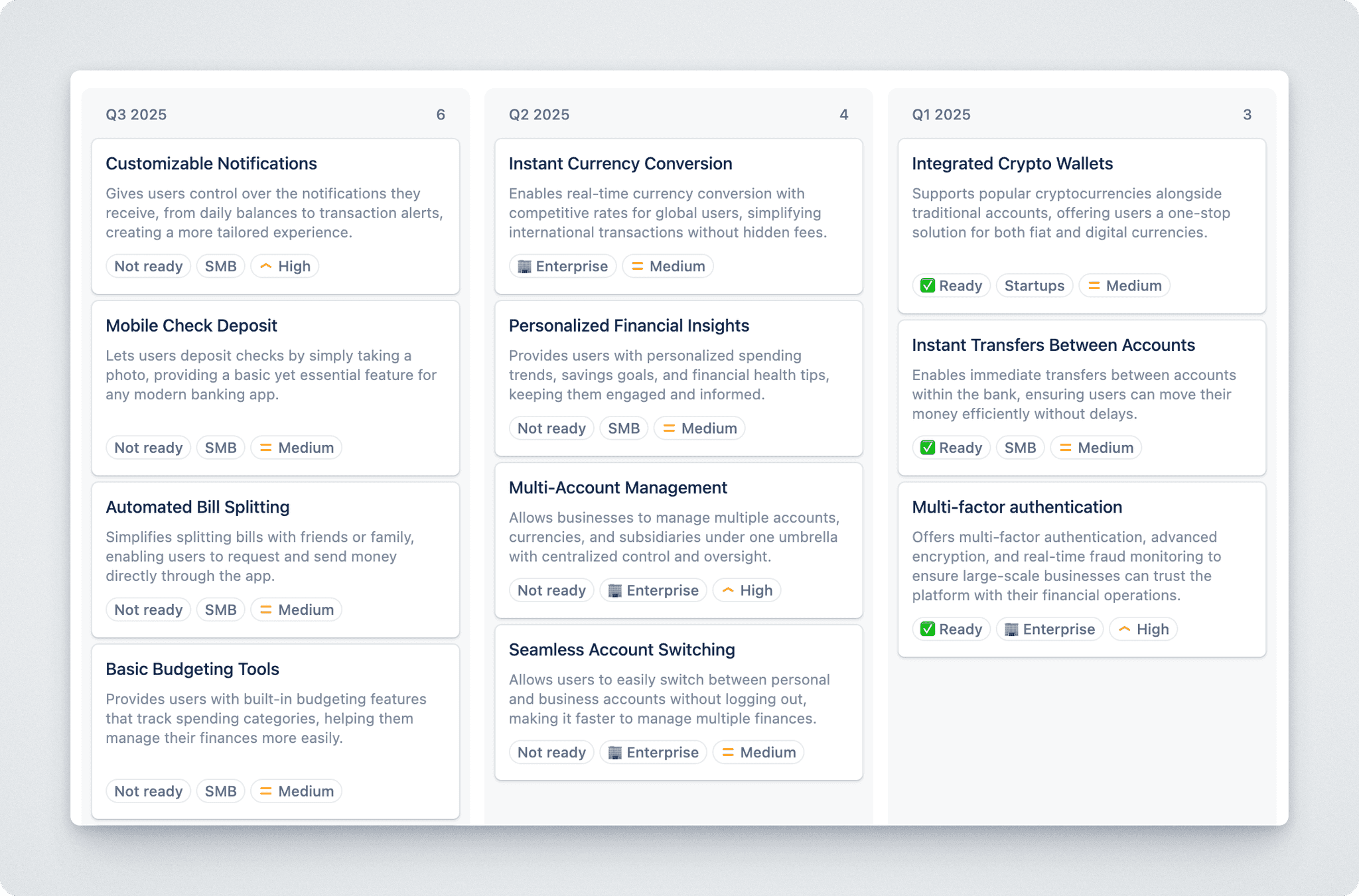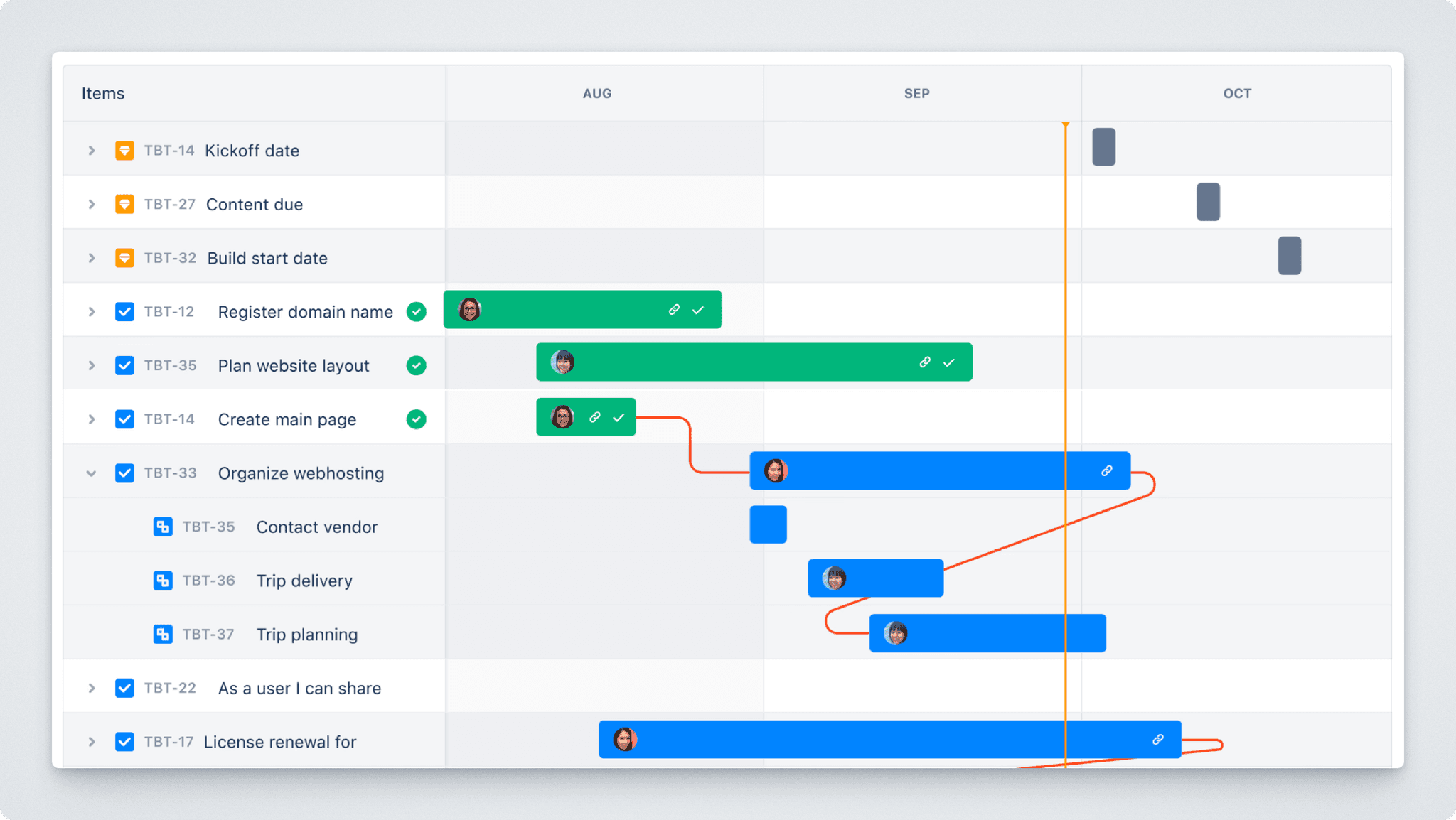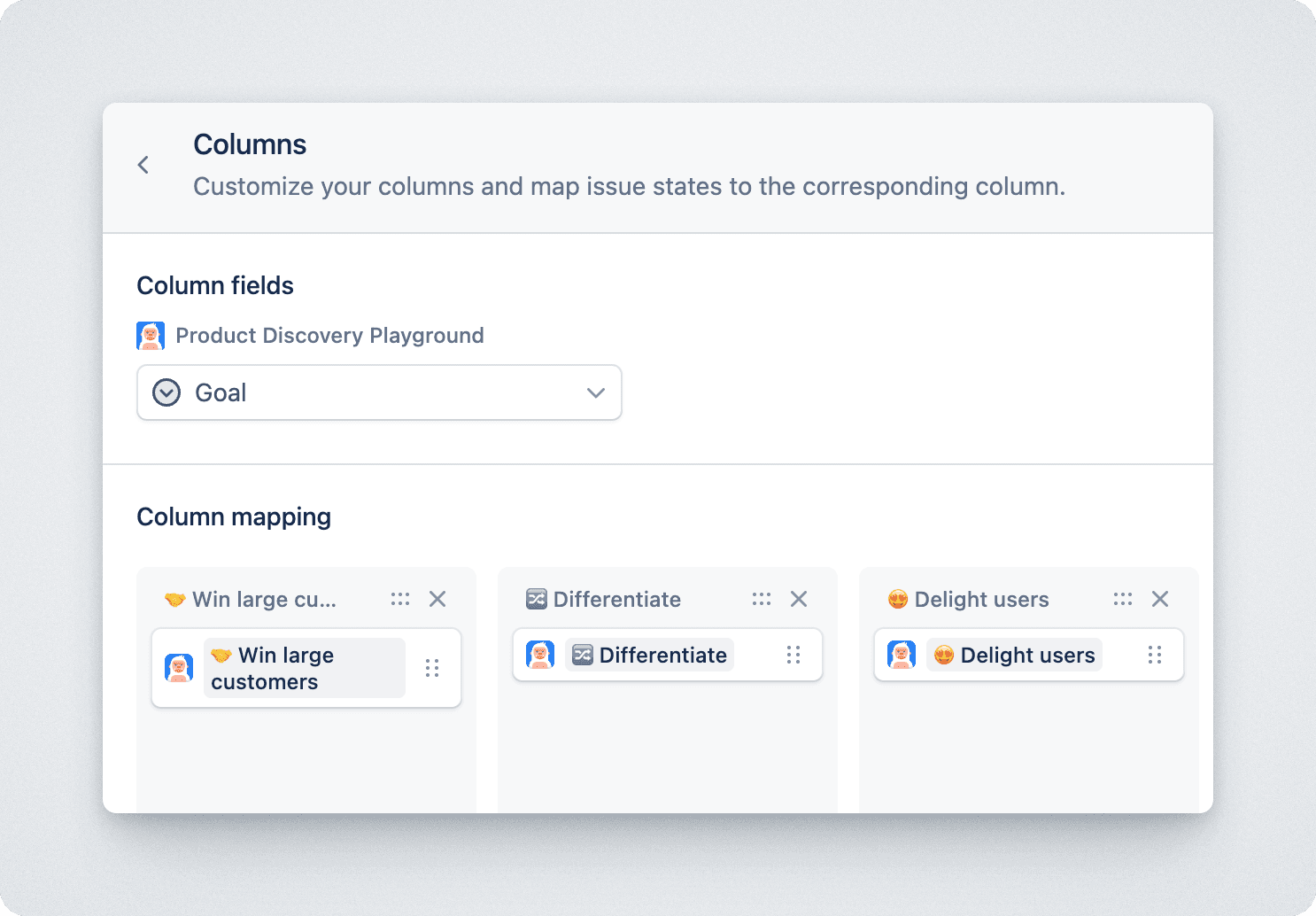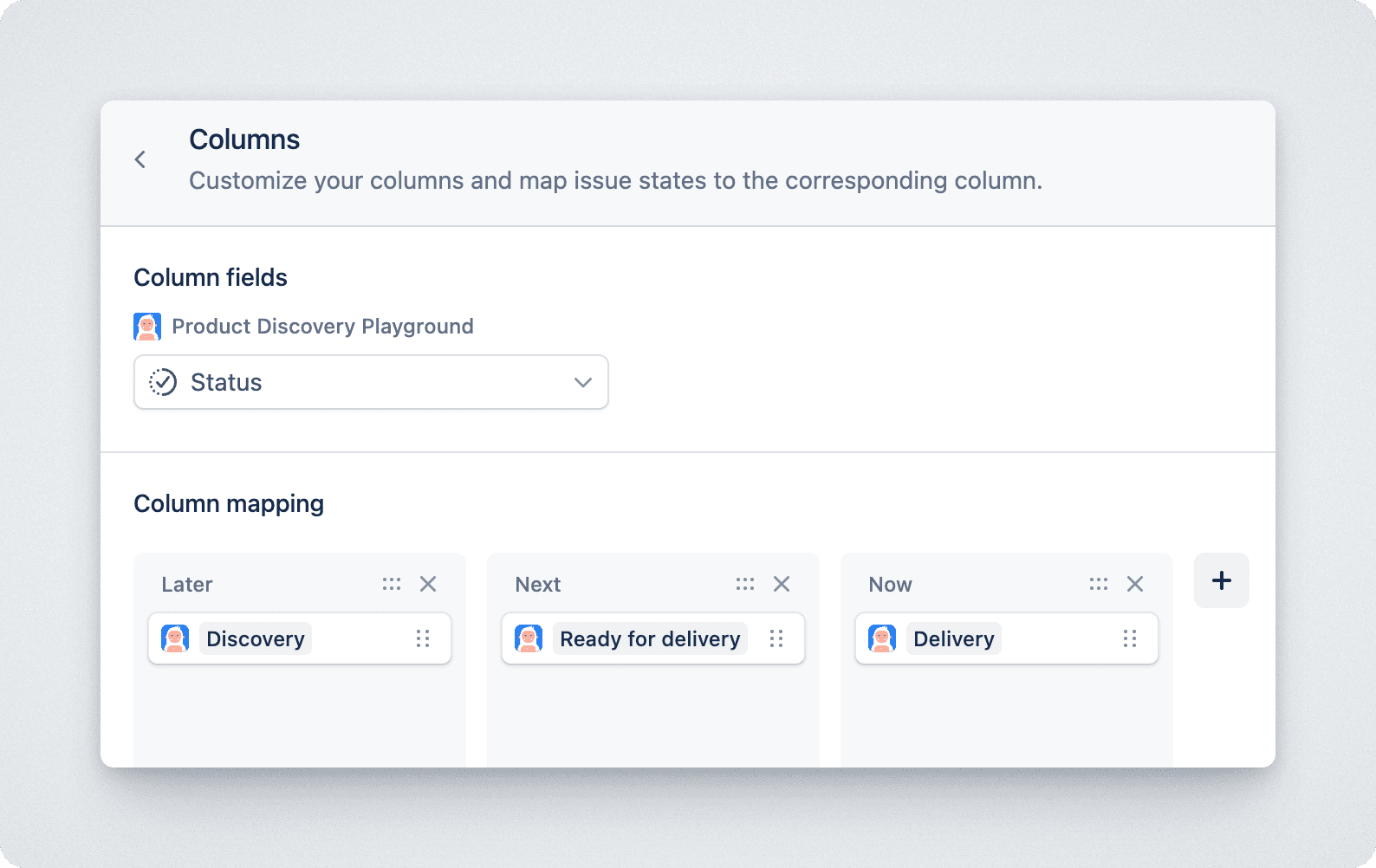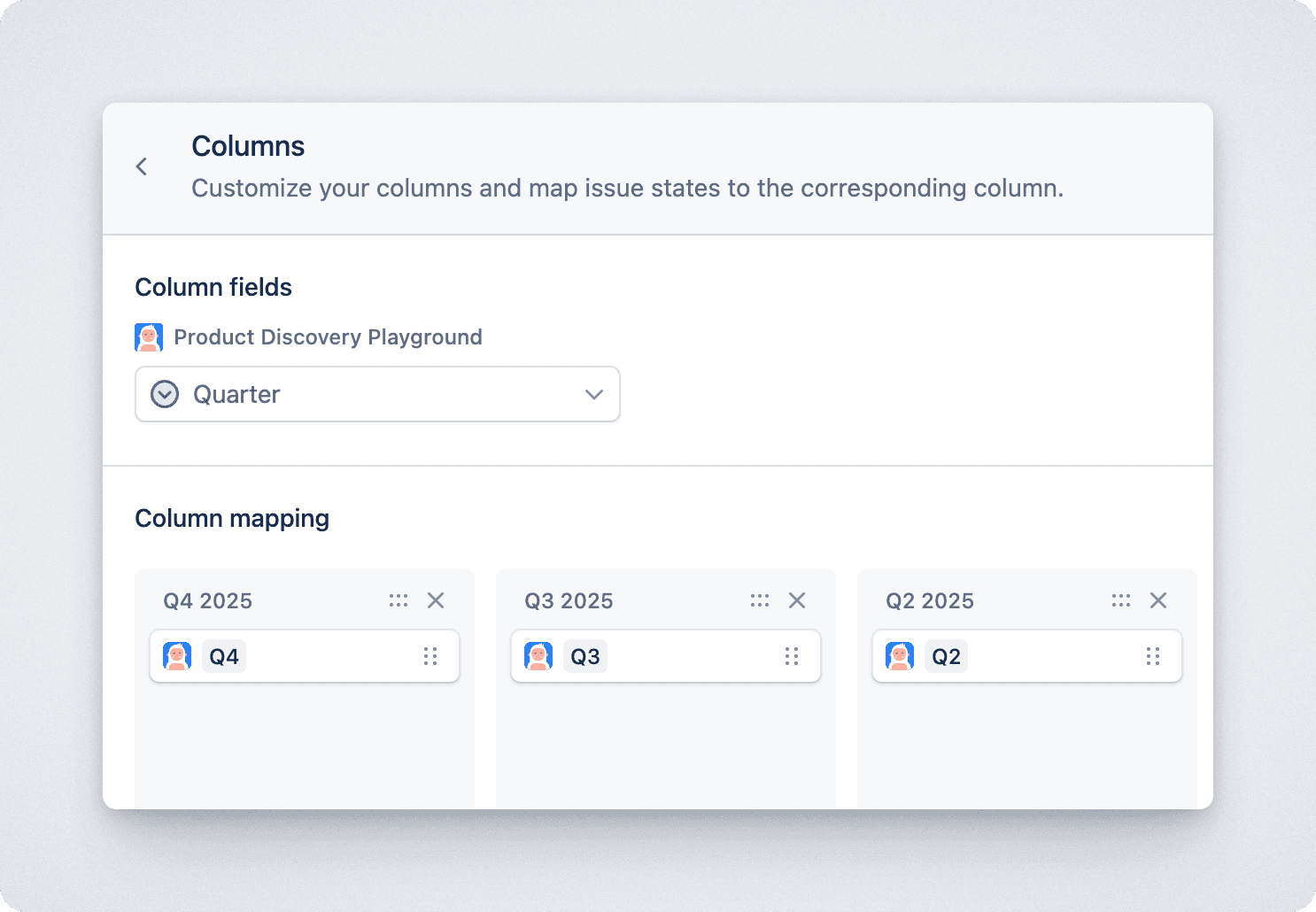Foreword
The single biggest problem in communication is the illusion that it has taken place. - George Bernard Shaw
In any organization, communication is the backbone that supports everything else. But as George Bernard Shaw wisely pointed out, the challenge is ensuring that communication actually happens, rather than just assuming it has.
During my 15 years at Atlassian, we’ve lived this reality. When we were a small team of 50, keeping everyone informed was straightforward. But as we grew to over 5,000 team members, the complexity of maintaining effective communication increased dramatically. We faced conflicting priorities, unclear expectations, and missed deadlines. The illusion of communication was often the culprit.
Despite developing tools designed to enhance collaboration, we found ourselves needing to rethink our own communication strategies.
This guide draws from the hard-won lessons of communicating product roadmaps at Atlassian. With stakeholders spread across the globe, keeping everyone aligned was crucial. Marketing needed to plan ahead for launches, Support had to be ready to help customers and anticipate issues, and Sales required the latest insights to tackle objections.
We hope you find this guide practical, insightful, and, most importantly, a catalyst for better communication and collaboration in your own teams.
Thanks for reading.
The right tool for the job
We’ve tried them all – all the different ways to communicate upcoming plans with stakeholders
The Excel or Google spreadsheet
The Powerpoint presentation
The Miro board
Roadmap screenshots (yes, it’s a surprisingly common thing)
Dedicated roadmapping tools
… you name them
The problem. Most of these tools create static roadmaps that are outdated as soon as you save them. It’s easy to get excited about crafting that first version, but how often do we see those roadmaps updated and maintained? The answer is, not nearly enough.
We discovered that the simplest way to keep your roadmap up to date is by using Jira. That’s where all the work is already captured and tracked. But Jira roadmaps are primarily designed for planning, not as a communication tool. They contain too much detail and not enough context to be an effective communication tool. They are also hard to share, especially with folks that may not have access to Jira. And sharing a screenshot of the roadmap isn’t really going to cut it.
So, that’s why we built Released—to help product teams communicate effortlessly with stakeholders. When pairing Jira with Released you get the best of both worlds. Live Jira data from your Jira Software or Jira Product Discovery projects, presented on Roadmaps that are highly customizable, easy-to-share and designed for communication.
But the right tool is only part of the equation. It’s equally important to know how to tailor your message to specific audiences. Different stakeholders have different needs and perspectives, and understanding how to communicate effectively with each group is crucial. That’s what this guide is all about. We’ll explore strategies for crafting your message, ensuring that it not only reaches your audience but also engages and inspires them to contribute to your product’s success.
Stakeholder needs and expectations
Keeping stakeholders in the loop isn’t as simple as just sending out a weekly newsletter. Different teams focus on different aspects of the product, and if you want people to actually pay attention to your updates, you need to tailor the message to your audience.
Needs and expectations
What do different stakeholders truly care about? To answer this question, we identified four key stakeholder groups and conducted interviews with individuals from a dozen companies. The table below highlights the most common themes that emerged from these discussions. While this isn’t an exhaustive list, it provides a solid foundation for tailoring your communication to meet the specific needs and interests of each group.
Leadership/Executives
Clear Product Vision and Strategy
"We need a well-defined product vision and strategy to ensure alignment with our overarching business goals and objectives."
Performance metrics and KPIs
"Establishing performance metrics and KPIs is crucial for us to evaluate the product's success and guide our strategic direction."
Resource allocation and budgeting
"We need to discuss resource allocation and budget considerations to effectively support product development and maximize ROI."
Dependencies management
"We must identify and manage dependencies between product initiatives and other projects to ensure that no one is blocked."
Sales/Marketing
Clear Product Vision and Strategy
"We need a clear product vision and strategy to craft messaging that truly resonates."
Feature understanding
"It’s essential to grasp how new features function, the problems they address, and their unique market advantages."
Target audience insights
"Deep knowledge of our target audience enables us to tailor our marketing campaigns effectively."
Launch plans and timelines
"Coordinated launch plans and timelines are crucial for smooth marketing efforts."
Support/Customer Success
In-depth knowledge of product features
"We require detailed insights into product features and benefits to provide accurate and effective support to our customers."
Anticipating customer questions
"Identifying potential customer questions would greatly enhance our ability to provide timely and relevant assistance."
Access to training materials
"Access to up-to-date training materials and resources for product updates is essential for us to deliver informed support and ensure customer satisfaction."
Rollout timeline and phases
"Clarity on the rollout timeline helps us to communicate clearly with customers about when they can expect to see changes."
Engineering
Feature overview and objectives
"We need a clear understanding of new features, including their purpose and the problems they solve, to align our efforts with the product vision."
User impact and requirements
"It’s essential for us to know how new features will affect users and any specific requirements to ensure we deliver value."
Dependencies and integration points
"We require information on dependencies between features and their integration with existing systems to identify challenges early."
Success metrics and evaluation criteria
"Clarity on how success will be measured post-launch is important for us to focus on delivering quality outcomes."
Introduction to roadmaps
A roadmap is more than just a plan; it’s a tool that aligns teams and guides product development. Think of it as a shared, dynamic document that unites everyone around the evolving path of your product. By clearly communicating priorities and the reasoning behind them, a roadmap ensures that everyone—from leadership to customer-facing teams—knows what’s coming. Each group will view the roadmap through its own lens, making upcoming work tangible and easy to grasp.
In a world where priorities shift constantly, a roadmap must be a living document. It needs regular updates to reflect the latest developments. This adaptability is crucial, allowing teams to respond effectively to new information and changing market conditions.
Creating a roadmap isn’t a one-size-fits-all process. The term "roadmap" covers a range of tasks: collaboration, communication, prioritization, and setting expectations. Roadmapping involves multiple stakeholders within your team and organization, as well as external parties like customers and partners. The format and approach you choose should vary depending on your audience.
Here are some best practices to guide you in crafting an effective roadmap:
Key Elements of an Effective Roadmap
A good roadmap lets the team see what’s coming without constant check-ins or status updates. When it works, people can find answers on their own, keeping conversations focused on decisions instead of updates.
Instead of a rigid plan, a roadmap should be a tool for alignment—clear enough to be useful, but flexible enough to adapt. If it takes too much effort to maintain or doesn’t reflect reality, people stop trusting it. Keep it simple, make it easy to update, and shape it around what actually helps the team move forward.
Types of roadmaps
Can you share the roadmap with me?
It’s a question we hear all the time. Stakeholders naturally want to know what’s coming up so they can prepare. That’s where roadmaps come in—they can provide a high-level view without overwhelming anyone with details.
Notice we say “roadmaps” instead of “roadmap”? That’s intentional. It’s easy to think of a roadmap as a single document, but in reality, it’s more effective to create different types of roadmaps tailored to the needs and expectations of each stakeholder group.
Let's take a look at a few common roadmap types, how they are structured and what information should be shared to create a great starting point for a conversation with relevant stakeholders.
Goal-Oriented roadmaps
Leadership/Executives
A goal-oriented roadmap is about focusing on what really matters: hitting specific targets. Instead of getting lost in features or timelines, this type zeroes in on a few key goals and outlines the projects that will help you achieve them.
Goal-oriented roadmaps work well with frameworks like OKRs (Objectives and Key Results). While OKRs track measurable results, a goal-oriented roadmap focuses on the actual work that needs to be done to hit those targets. The roadmap gives direction and context, while OKRs make sure you’re measuring the right things.
Example
Imagine a banking app with a goal-oriented roadmap that zeroes in on specific objectives, where each column represents a distinct goal, such as "Win Large Customers" or "Delight users"
To steer the conversation with leadership teams, it could include the following details:
Impact: An assessment of how the initiative will drive progress toward the goal, highlighting its potential value.
Priority Level: A ranking of the initiative's importance relative to others (e.g., "High," "Medium," "Low"), ensuring stakeholders can focus on what truly matters.
Success Criteria: Clearly defined metrics that outline what success looks like for the initiative, providing a benchmark for evaluation.
Resources Required: An overview of the necessary resources—team members, tools, and budget—needed to effectively execute the initiative, facilitating discussions on feasibility.
Dependencies: A list of related initiatives or tasks that must be completed or are interconnected with the current initiative, helping to identify potential bottlenecks and collaborative needs.
When to use it:
To get multiple teams working towards shared objectives.
When you’re facing a big challenge or opportunity that needs everyone’s effort.
To lay out strategic priorities for stakeholders who want to know where the product is headed.
Watch out for:
Goal Overload: Don’t create a long list of objectives. Focus on a few high-impact goals to keep things clear.
Lack of Flexibility: Make sure your roadmap can adapt as priorities change. Sticking too rigidly to original goals can mean missed opportunities.
Shoehorning: Don’t force features into goals just to include them. This can confuse priorities.
Single-Minded Focus on Goals: Allow room for small improvements that enhance the product, even if they don’t align with specific goals.
Theme-Based Roadmaps
Great for
Sales/Marketing
Theme-based roadmaps focus on big-picture themes rather than individual features or timelines. This approach aligns development with broader objectives and customer needs, giving your team a clear vision without getting bogged down in details.
Example
A theme-based roadmap for a banking app might focus a few key areas, each representing a distinct theme for Sales and Marketing leaders. For example, initiatives under Enterprise might focus on security and scalability, while Reporting initiatives might focus on providing financial insights.
To guide discussions with Sales and Marketing leaders, it could include the following details:
Market Impact: An assessment of how each theme will influence market positioning and customer acquisition.
Target Audience: Identification of specific customer segments that each theme aims to address, ensuring alignment with marketing strategies.
Sales Enablement: Resources or tools that will support the sales team in leveraging the themes to drive conversions.
Competitive Analysis: Insights on how the themes compare to competitors, highlighting unique selling points.
Campaign Opportunities: Potential marketing campaigns or initiatives that can be developed around each theme to drive engagement and awareness.
When to use it:
To set clear areas of ownership that align with the marketing message.
To align your teams around specific focus areas.
When you need a flexible framework that can adapt as priorities shift while keeping everyone aligned.
Watch out for:
Lack of Actionability: Pair each theme with specific initiatives to keep things clear.
Overly Broad Themes: Make sure themes are focused enough to provide direction but broad enough to cover various initiatives.
Dilution of Focus: Regularly check that initiatives align with themes and stay relevant.
Now/Next/Later Roadmaps
Great for
Leadership/Executives
Now/Next/Later roadmaps give a broad view of your product’s journey, breaking down priorities into what you’re focusing on now, what’s coming next, and what’s on the horizon for later.
Typically, these roadmaps showcase features planned for the next 6 to 12 months. The “Now” column is usually well-defined, featuring tasks that are clear and actionable. As you move to the “Next” column, you may find features that are still being shaped by team discussions or user feedback. The “Later” section, tends to be more fluid and less understood; features here are more likely to evolve or change entirely as new insights emerge. This keeps your team focused on immediate priorities while staying open to future changes.
Now/Next/Later roadmaps have also become essential for customer-facing communication because they reveal product priorities without locking your team into specific delivery dates.
Example
The Now column in a banking app could highlight ongoing initiatives, the Next column could contain upcoming projects, and the Later column might contain projects planned for the next 6-12 months.
To facilitate discussions with executives, consider including the following details:
Goals: An overview of how each initiative aligns with the company’s strategic goals and vision.
Impact: An assessment of how the initiative will drive progress toward the goal, highlighting its potential value.
Sales readiness: Indicator whether the sales team was trained and necessary resources were provided.
Success Criteria: Clearly defined metrics that outline what success looks like for the initiative, providing a benchmark for evaluation.
Resources Required: An overview of the necessary resources—team members, tools, and budget—needed to effectively execute the initiative, facilitating discussions on feasibility.
Dependencies: A list of related initiatives or tasks that must be completed or are interconnected with the current initiative, helping to identify potential bottlenecks and collaborative needs.
When to use it:
To communicate what's in progress, what's planned and what work is being considered.
When you want a roadmap that’s easy for everyone to understand without too many details.
To adapt quickly to changing priorities while keeping the team aligned.
Watch out for:
Lack of Context: Provide context to help the team understand the “why” behind each item.
Overloading the Now Column: It’s tempting to pack too many features into the "Now" section. Keep it focused on high level features instead of listing every single task.
Neglecting Feedback Loops: Regularly incorporating user feedback into the roadmap ensures that the team is building what users truly need.
Quarterly (or Monthly) Roadmaps
Great for
Sales/Marketing
Everyone
Quarterly (or Monthly) roadmaps show your product’s timeline, indicating when specific features will be released. This helps teams and stakeholders understand the schedule and prioritize their work.
These roadmaps typically highlight features planned for the next 6 to 12 months. Features for the upcoming quarter or month are usually well-defined, with clear timelines and tasks. However, as you look further out, the certainty around delivery dates decreases. This reflects the reality that plans can change as new information comes in.
Example
A quarterly roadmap for a task-list app organizes work in upcoming quarters such as Q1, Q2, Q3, Q4.
Depending on the target stakeholder, the roadmap items should include different details:
Objectives: Specific goals tied to each initiative, making it clear what success looks like and why it matters.
Resource Allocation: A snapshot of the resources needed for each initiative, including team members and budget, to ensure feasibility.
Success Metrics: Clear metrics to measure how well each initiative is performing, providing a way to assess impact.
Risks and Challenges: A candid look at potential obstacles that could arise, prompting discussions on how to navigate them.
Resources Required: An overview of the necessary resources—team members, tools, and budget—needed to effectively execute the initiative, facilitating discussions on feasibility.
Dependencies: A list of related initiatives or tasks that must be completed or are interconnected with the current initiative, helping to identify potential bottlenecks and collaborative needs.
Sales Readiness: An indication of whether a sales readiness meeting has occurred, ensuring that the sales team is prepared to support the initiative.
Target Customer: The specific customer segments that the initiative aims to address.
When to use it:
For managing cross-functional projects that need collaboration between different teams.
To communicate rough timeframes to help other teams align and plan.
Watch out for:
Over-Detailing: Balance providing enough information with not overwhelming the plan.
Lack of Alignment: Ensure each task aligns with stakeholder goals.
Resistance to Change: Encourage flexibility. Be open to revising timelines as new information arises.
What about Timelines aka Project Plans?
A lot of people call project plans “product roadmaps,” but they’re not the same thing. Project plans—often shown as Gantt charts—lay out a timeline and help teams coordinate work. They’re useful for mapping out the next three months, making it easier to track progress and manage tasks.
Timeline roadmaps can be useful for delivery teams, especially when different teams rely on each other’s work. But generally, avoid timelines and specific dates in product roadmaps. Here’s why:
They shift the focus from “why” to “when,” which isn’t the most useful conversation for most stakeholders.
They’re a hassle to keep updated. One slip, and everything else is off. It’s a time sink with little return. How many hours have you spent moving boxes on a timeline around?
Setting up your roadmap
Note: The examples below use Released to demonstrate how to set up your roadmap. However, these steps are not exclusive to Released and can be applied to other roadmapping tools as well.
Define your columns
We’ve just covered the various types of roadmaps, and you probably picked up on one of the main differences: the column structure. How you group these columns will shape the conversation you have with your stakeholders. Whether it’s a high-level strategic chat or a detailed timeline discussion, the structure matters.
Released Roadmaps let you create custom columns and map various field types to those columns. This flexibility makes it easy to tailor the roadmap to your audience. Here are some common column configurations we see:
Goals
By focusing on goals, you keep everyone moving in the same direction. This approach helps ensure that every initiative supports the overall mission. Whether you’re using specific goals or broader themes, the key is to anchor the conversation on the results you’re aiming to achieve. This way, you’re not just talking about what you’re doing, but why it matters.
To tie initiatives to goals, make sure your tickets have a Goal field. In the column settings, add a column for each goal, pick the Goal field from the dropdown, and map each option to the right column. Simple as that.
Priorities
Avoid specific dates in most roadmap discussions. Many teams fall into the trap of promising features by a certain date, simply because they chose the wrong format to communicate priorities. A “Now, Next, Later” format helps focus the discussion on current work, upcoming plans, and ideas in discovery.
In the column settings, add the Now, Next, and Later columns. Select the Status field and map its options to each column. If you prefer, you can create a separate field for Now/Next/Later, but using Status keeps it simple and easy to manage.
Communicate (rough) timelines
When it comes to timelines, keep it simple. Most teams just need to know which quarter or month a feature is expected. This is usually enough to plan resources without getting bogged down in specifics.
To set it up, add columns for each quarter in the column settings. Make sure your tickets have a Quarter field, then select it from the dropdown and map each quarter option to the right column.
Filter your initiatives
Decide what to share. If your goal is to communicate overall objectives, focus on high-level ideas or epics. But if you’re informing your support team about specific deliverables, dive into the details, including bug fixes.
Balance detail without overwhelming your audience. Does the support team need to know every bug, or just the high-priority ones?
Released Roadmaps work across project boundaries, allowing you to share big-picture ideas from Jira Product Discovery while including stories and bug fixes from your delivery projects.
As a rule of thumb, you want to share:
Ideas and Epics: to give folks a high level overview and keep the discussion centered around goals and objectives.
Stories: to provide more detail on specific ideas, which can be important for marketing, sales
High priority Tasks and Bugfixes: to let the Support team know about important fixes.
Only show important fields
A standard Jira or Jira Discovery Project comes with more than a dozen fields out of the box. That’s too much for most stakeholders, which is why they avoid jumping into Jira to view roadmaps.
Released Roadmaps let you choose which fields to display. Less is more. Focus on the story you want to tell and only include fields that enhance that narrative.
Examples
Quarterly roadmap presentation
When presenting to leadership teams, the conversation often focuses on higher level goals and initiatives that will help the company achieve those goals.
The example roadmap below is ogranized by Goals, making it easy to focus on each goal column by column. To ensure the conversation remains focused on the goals, it only includes 5 fields.
Title / Summary
Short description: custom written for the leadership team.
Impact: expected impact towards the goal on a scale of 1-5.
Effort: expected effort on a scale of 1-5.
Product area: to provide a little more context on where it fits in.
For most initiatives, you want to keep the conversation at this level. However, you can provide more details in the detail view. For instance, you might want to include which team is working on a specific feature or highlight key customers who have been requesting it.
Sales roadmap
When presenting to sales teams, the focus shifts to initiatives that directly impact revenue generation and customer engagement.
The example roadmap below is organized by quarter, allowing the team to get a rough understanding of the target dates for specific initiatives. Again, we are using quarter columns instead of timelines to avoid communicate that these are rough estimates.
To keep the conversation targeted and actionable, it includes five key fields.
Title / Summary
Short description: tailored specifically for the sales team.
Sales Readiness: an indicator whether the sales team has been briefed on the value and functionality.
Confidence: the confidence level on a scale of 1-5 that this initiative will be delivered in the quarter.
Target Customers: identifying key customer segments that will benefit from the initiative.
While they may appear somewhat similar, the conversation this roadmap facilitates is quite different from the one for the leadership team. It focuses on operational readiness, highlighting any gaps and providing a sense of confidence that the initiatives can be delivered within the quarter. Typically, that confidence level decreases as you look further out into the timeline of an initiative.
Summary
Roadmaps help stakeholders see what’s ahead, but there’s no one-size-fits-all approach. The right format depends on your audience and goals—whether it’s focusing on outcomes, themes, priorities, or timelines.
With Jira and Released, creating dynamic, up-to-date roadmaps is simple. You can customize them to fit your needs and easily share them with non-Jira users. By choosing the right structure and keeping your roadmap clear and adaptable, you ensure that everyone stays aligned and informed.
About the author

